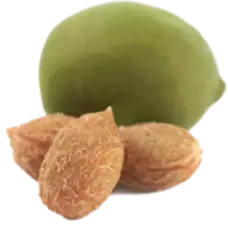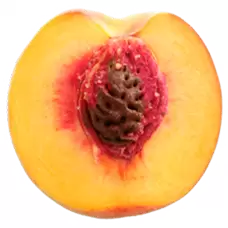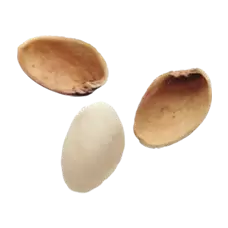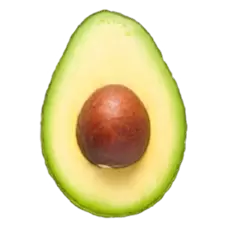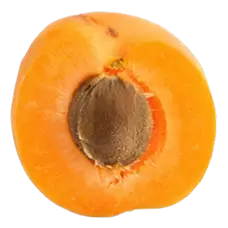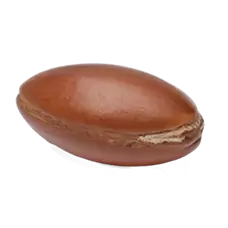Innovative Materials for Architecture and Design and Construction
As robust and long-lasting as well as innovative materials for architecture and design, fruit stone and shell granules are ideally suited for many decorative and interior design applications. They are great as biodegradable replacements for conventional plastic or glass decorative granules.
Decorative Applications
We work with architecture, interior design and construction firms, supplying them with the versatile organic materials they need to achieve their clients' requirements.
Fruit stone powders are versatile by nature and are truly innovative materials for architecture and design. They can be applied as components in everything from surface coating to insulation materials, for instance as cushion fillers due to their insulative and heat-storing capacity. Some other proven applications are:
- Textured tiles for floors or walls and textured wallpaper
- Filling material for landscaping and nature-inspired arrangements
- Exhibition booth and shop design concepts
Natural Insulation Materials
In the construction industry, insulation plays a crucial role in improving the energy efficiency and comfort of buildings. Traditionally, synthetic products like mineral wool or fiberglass have been commonly used as insulation materials due to their effectiveness in reducing heat transfer. However, with growing environmental concerns and a shift towards sustainability, there has been a significant rise in the use of innovative bio-based insulation materials.
Bio-based insulation materials offer several advantages over traditional synthetic options. Firstly, they are derived from renewable resources. This means that they have a lower carbon footprint and contribute less to environmental degradation compared to their synthetic counterparts. Furthermore, bio-based insulation materials are typically biodegradable or recyclable, which makes them more sustainable throughout their life cycle.
In terms of performance, bio-based insulation materials are continuously being developed and improved to match or even exceed the insulation properties of traditional synthetic materials. Advances in manufacturing techniques and formulations have resulted in bio-based insulation materials with excellent thermal resistance, sound insulation capabilities, and fire retardant properties.
Bio-Based Colors for Design and Decoration
Colours play a crucial role in enhancing the atmosphere of various spaces, ranging from personal living rooms to corporate boardrooms. In this regard, shades like faux white, beige, sandy, ochre, and earthy tones have been proven to be particularly effective.
These colours possess unique qualities that contribute to the overall ambience of a given space. They create a sense of warmth, tranquility, and comfort, making them suitable for both private and public settings. Whether it's a cozy home environment or a professional meeting room, incorporating these colours can significantly improve the overall mood and aesthetic appeal.
To further enhance the versatility of these colours, fruit stone powders and granules can be easily dyed using traditional dyeing techniques. This means that they can be transformed into a wide range of hues to achieve almost any desired effect in various applications. Whether it's creating a vibrant focal point or establishing a more subdued and sophisticated look, these dyed fruit stone powders and granules offer endless possibilities for customization.
Bio-Additives For Building Materials
The construction industry is increasingly embracing the principles of sustainability and environmental responsibility. As part of the broader shift towards a more sustainable economy, there is a growing recognition of the need to reduce the reliance on non-natural materials in construction and instead adopt bio-based building materials.
Bio-based building materials are derived from renewable sources such as plants, agricultural waste, or recycled materials. They offer several advantages over non-natural materials in terms of sustainability and environmental impact.
One key advantage of bio-based building materials is their recyclability. These materials can often be recycled at the end of their lifespan, reducing waste and minimizing the demand for new resources. This closed-loop approach helps to conserve natural resources and reduce the overall environmental footprint of the construction industry.
Furthermore, bio-based building materials are generally safer for both human health and the environment. They are typically free from harmful chemicals, toxins, and volatile organic compounds (VOCs) that can be present in non-natural materials. This makes them a healthier choice for construction projects, promoting better indoor air quality and reducing the risk of adverse health effects for occupants.
Benefits for your application:
- 100% renewable and sustainable
- Minimum carbon emissions
- Higher resistance, hardness and durability
- Micron size adaptability and diverse mixtures tailored to your requirements
- Strong heat-retention capacities
Frequently Asked Questions (FAQ): Innovate Materials for Architecture and Design
1. What are innovative materials?
Innovative materials are materials that have been newly developed or adapted for a specific use and may have unique properties compared to traditional materials. Examples of innovative materials include advanced composites, graphene, and smart textiles. Innovative materials for architecture and design are substances that have been newly developed or adapted to meet the specific needs and challenges of the industry. These materials often possess unique properties and characteristics that set them apart from traditional materials. They are designed to push the boundaries of what is possible in terms of aesthetics, performance, sustainability, and functionality. Examples of innovative materials for architecture and design include advanced composites, which are engineered materials made by combining two or more constituent materials to create a superior product with enhanced properties. innovative materials for architecture and design offer architects and designers new avenues for creativity and problem-solving. They enable the creation of structures that are more energy-efficient, sustainable, and visually striking. These innovative materials for architecture and design can revolutionize construction methods, improve building performance, and contribute to the advancement of the industry as a whole. Incorporating innovative materials for architecture and design into architectural and design projects opens up opportunities for innovation, pushing the boundaries of what is possible in the built environment.
2. What is the purpose of organic architecture?
The purpose of organic architecture is to create sustainable and harmonious built environments that seamlessly integrate with nature. It prioritizes the use of natural forms, materials, and design principles. Organic architecture aims to minimize environmental impact, enhance human well-being, and foster a strong connection to the natural world.
3. What are the advantages of using bio-based building materials over non-natural materials?
The use of organic materials in architecture and design has become increasingly popular in recent years due to the environmental benefits these innovative materials provide. Bio-based building materials, which are derived from renewable sources, offer recyclability, safety, and environmental friendliness compared to non-natural materials. This promotes a more sustainable approach to designing and constructing buildings. In addition, organic materials offer greater flexibility in design, enabling the creation of more creative and unique structures that harmonize with the natural surroundings.
4. What materials do architects use to design?
Architects utilize a diverse range of materials in their design process. These materials are chosen based on factors such as aesthetics, functionality, structural needs, environmental considerations, and budget. Commonly used materials include concrete, steel, wood, glass, brick, and masonry. Composite materials, sustainable and recycled materials, synthetic membranes, and stone are also prevalent choices. Additionally, architects incorporate plastics and polymers into their designs. The selection of materials is a critical aspect of architectural design, allowing for the creation of visually appealing, structurally sound, and sustainable structures.
5. What are decorations in construction?
Decorations in construction refer to the elements and features added to enhance a building's aesthetic appeal. They can include architectural details, landscaping, sculptures, wall treatments, flooring materials, ceiling treatments, furniture, fixtures, artwork, and accessories. These decorations contribute to the overall ambiance and visual impact of the building, both externally and internally. They play a vital role in creating an attractive and personalized environment that reflects the desired style and enhances the overall design. On top, the innovative materials provided by Biopowder can be a valuable addition to the architect's toolbox in achieving these goals.
6. What are decorative materials?
Building decoration materials, also known as decorative materials, are substances or products specifically designed to enhance the visual appearance of a space or object. These materials find applications in architecture, interior design, and artistic endeavors. They come in various forms and can be applied to surfaces, integrated into structures, or used as standalone decorative pieces. Building decoration materials possess visually appealing qualities such as color, texture, pattern, and shine. Examples of these materials include wallpaper, paint, tiles, fabrics, decorative trimmings, decorative glass, mosaics, decorative metalwork, and ornamental woodwork. They offer opportunities for creative expression, customization, and the creation of visually striking and aesthetically pleasing environments.
7. What are some specific applications of fruit stone powders in architecture and design?
Fruit stone powders in bio design architecture have specific applications such as creating textured tiles for floors or walls. They can also be used in the design of textured wallpaper, adding visual interest and a unique aesthetic. Fruit stone powders serve as filling material for landscaping projects, offering a natural and biodegradable option for pathways and nature-inspired arrangements. Additionally, they find use in exhibition booth and shop design concepts, providing sustainable and visually appealing elements to these spaces. Overall, fruit stone powders demonstrate their versatility and innovation as materials in the field of bio design architecture, offering eco-friendly alternatives for various decorative purposes.
If you have something else in mind, we can help you select the natural ingredients that integrate best with your formulation.

